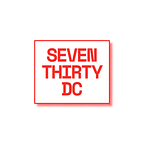Q&A: Ann Friedman, Newsletter Genius
She’s in town as part of Pop-Up Magazine, playing Tuesday at the Warner Theatre.
What kind of event will you ever attend where you eat forbidden cinnamon, choke back tears, and sing karaoke with a thousand strangers?
There’s only one possible answer — Pop-Up Magazine. I attended one last fall at The Lincoln Theatre, and the stories were incredible. They included
— a photo essay on violence in Chicago
— a discussion of the intersection of conflict and cuisine, led by Samin Nosrat (Salt Fat Acid Heat), which included the aforementioned cinnamon — did you know that Vietnamese cinnamon is the best cinnamon, but wasn’t available in the United States for decades following the war?
— a Powerpoint presentation on the most-banned karaoke songs in America, which culminated in the whole audience promising to never again sing “Don’t Stop Believin’” in karaoke?
Pop-Up Magazine is one of the coolest experiments in media today, a mash-up of the attention and experience economies that gives creative journalists a chance to stretch their legs and tell stories unbridled by SEO or word counts. It’s a return to the oral tradition complemented by digital-age flourishes.
Ahead of Tuesday’s Pop-Up Magazine performance at the Warner Theater, we got to email with Ann Friedman, who is appearing in this round of the magazine.
// USE CODE SUPPORTER5 FOR A DISCOUNT! //
Ann is a journalist and editor who’s been ahead of the curve with newsletters, podcasts and now live media. She is one half of the popular Call Your Girlfriend podcast with Aminatou Sow, which is coming to Sixth & I next month. We talked to hear about curation, local news, and Pop-Up Magazine’s experiment in live storytelling.
You have a great weekly newsletter which does an incredible job of conveying compelling content to your readers. We think we do something similar at 730dc, in terms of playing a gatekeeper role of curation and aggregation. Do you ever feel like there’s too much good storytelling on the web?
There’s not too much! But I do think it can be hard to find the good stuff when you’re only using social media. That’s why I love making a newsletter and subscribing to other people’s. Human curation really matters to me, and I like to receive recommendations in forms I can bookmark and return to, which can be hard do when they come as part of an onslaught of social-media posts.
For us, it’s obvious what a 730dc story is — it’s local news or news that’s relevant for people interested in urbanism, with some generational stuff thrown in, too. What are the boundaries of an Ann Friedman Weekly story?
I’m pretty faithful to the subject headings: I tend to just link to what I’m reading and listening to and appreciating online. If I’m researching for a story, I won’t include a lot of those links. And I don’t tend to link to day-to-day news articles that I read. But truly, most things make it in. One of my original goals with the newsletter was purely selfish: I just wanted to track what I was consuming, because I think it’s important to read a breadth of sources.
Are there any local news projects, publications, experiments, etc that you are particularly excited about right now?
Well, Pop Up is truly one of my favorite media experiments right now! I also love Topic, Wilson, The New Territory, Popula, and Spook.
We definitely blurbed in 730 two of your pieces for the LA Times, “When New York Sends People to Los Angeles, They’re Not Sending Their Best” and “Why LA Is Becoming the New Iowa.”
Each deals, I think with an appropriately complicated and self-aware approach, with gentrification and movement. How was the reaction to those pieces?
I heard from a few longtime residents that those columns expressed sentiments they felt but hadn’t been able to articulate to new-transplant friends. I heard from a few newcomers, too, that they appreciated some encouragement to really get involved in their new city.
In all seriousness, the kicker of that first article — “This is the question for L.A.’s economically privileged new arrivals: How do you help care for the city that drew you in, rather than allow your presence to steamroll its culture?” — that is really part of our raison d’etre as a publication, just transposed to DC. what are some concrete ways you’ve seen peers in LA live up to that question?
I’ve seen my friends pick an issue and really stick with it, staying involved in granular ways. Two friends who recently moved from New York have gotten super involved in the LA River and cleanup and preservation efforts. Another friend who moved from Austin has become very involved in immigration, showing up to bear witness at removal hearings in court and being there for every protest and rally. No one can be involved on every issue, but everyone can pick one or two things and really follow through.
What makes something a pop-up magazine story, versus a print or web story?
In the case of Lara Shipley and my piece, it has so many multimedia elements that it’s perfect for Pop Up. We’ve got narration, archival photos, new photos, and audio recordings. All of these parts come together so beautifully and can be experienced simultaneously at Pop Up.
Quick Hits
Are you holding on to summer or ready for fall?
Always ready for fall.
Which pop-up peer’s performance is most likely to blow our minds?
Rebecca Skloot and Marc Bamuthi Joseph’s pieces blew me away!
What’s your favorite kind of museum?
I love DC’s national museums because I can wander in for just a few minutes at a time if I want to — no pressure to stay for hours to justify a ticket price.
If I see Ivanka and Jared on the street, I should…
…tell her that history will not remember her kindly.
